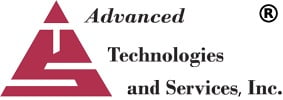Time after time, carriers contact us about wanting to do something to lower their skyrocketing USF Fees.
Some carriers may feel like they are at the mercy of an endless cycle of a volatile contribution factor that has risen drastically in the past decade -from 15.5 percent in the first quarter of 2011 to 31.8 percent in 2021.
A solution that carriers overlook is their ability to reduce their Federal USF tax by means of a Traffic Study.
By using the Safe Harbor Rate, you can be spending twice as much as you should on USF Fees when filing your 499s. With the deadline for carriers to submit their 499As around the corner, the time to complete a Traffic Study is now.
Here's a direct quote from a recent USAC Webinar;
The best (easiest) time to switch from using the Safe Harbor percentage to traffic studies is with the 1st quarter filing of the year ... Keeping methodology consistent for all quarters simplifies annual revenue reporting on the applicable Form 499-A due the following April.
These spikes in USF fees can be managed by ditching the Safe Harbor rate when you file your 499s, and instead performing a traffic study.
The Safe Harbor Rate
Alongside the contribution factor, the Safe Harbor rate is what's making you and your customer's USF Fees so high.
When carriers file their 499A, they have the opportunity to declare whether or not they want to calculate their actual Percent of Interstate Usage (PIU), or use the FCC’s Safe Harbor rate. Safe Harbor is a standard, assumed number (64.9% for VoIP, 37.1% for Wireless) used by companies that don't have the resources or know-how to calculate their actual PIU.
If you’re a VoIP provider, your USF Fees are calculated by assuming that your PIU is 64.9%, which is then multiplied by the contribution factor of 29.1 for the first quarter of 2022.
How Much Lower Can my Actual PIU Be?
In our experience, most provider’s actual Percent of Interstate Usage is nowhere near the PIU of 64.9%. If we had to estimate the average PIU we see, it would be around 30%, and often dips down into the mid to low 20s percents.
Carriers that rely on the Safe Harbor Rate face a competitive disadvantage to others, since they are at the mercy of the FCC's quarterly contribution factor. Carriers that perform traffic studies end up paying less money into the USF and attempt to recover fewer dollars from their customers.
De Minimus
Some carriers fall under a certain threshold for interstate and international traffic that makes them De Minimis. If you're a smaller provider that will have a contribution of less than $10,000 dollars, you're considered de minimus and do not have to contribute a dime to the Universal Service Fund.
For smaller providers, there’s a much higher chance that the Safe Harbor Rate will put them over the de minimis threshold, while their actual PIU is likely much lower in reality. It hurts us to think how many small carriers are paying in advance of $10,000 to the USF every year, when their actual contribution should be 0$.
Traffic Studies are essential to these smaller providers to validate that they are de minimis.
How Do I Complete A Traffic Study?
In order to complete a traffic study, you'll need to either have someone in house that can write some code to comb through your call detail records by Intrastate, Interstate, and Toll Free, or, you can partner with an outside vendor such as ATS to do all of the hard work for you.
Partnering with an outside company means that they complete a traffic study for you, then send you the results to attach to your 499. All of the costs incurred by doing a traffic study can be recovered in the Regulatory Recovery Fee.
We explain this better in our bi-weekly webinars. Feel free to sign up here!
Looking Forward
Hopefully, there is some kind of USF reform in the near future. Until then it’s in the service provider's best interest to investigate how much they could be saving by calculating their actual Percent of Interstate Usage, rather than use the outdated Safe Harbor rate.
In the 15 years that ATS has been doing Traffic Studies, every single study we’ve done resulted in a lower PIU than the Safe Harbor rate, with 100% acceptance by the FCC. Contact us today for a free analysis on a sample of your data and find out how much lower your actual PIU is than the Safe Harbor rate.
